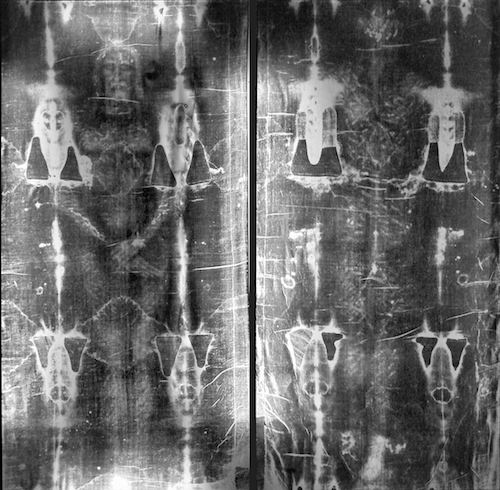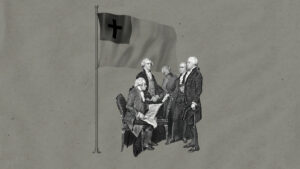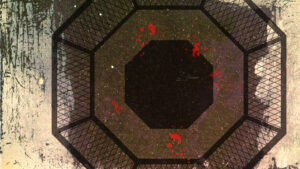New research indicates that the Shroud of Turin shows signs of blood from a torture victim, and undermines arguments that the reputed burial shroud of Jesus Christ was painted, the Catholic News Agency reports.
If you have no idea what that sentence was about, you’re not alone. Many evangelicals, especially younger ones, have likely never heard of the Shroud. But if you’re of a certain age (i.e., younger Baby Boomer, older Gen-Xer), the news probably comes with a twinge of nostalgia.
When I was in elementary school in the 1970s “unsolved” mysteries—UFOs, Bigfoot, the Loch Ness Monster, the Bermuda Triangle—were discussed and debated on a daily basis. My parents discouraged interest in most of those topics (too much like the occult), but being intrigued by the Shroud seemed acceptable since it had, as my mom explained, “something to do with Jesus.”
 Whether the Shroud really has something to do with Jesus is a question that was first raised in 1357 when a linen cloth claiming to be the burial shroud of Jesus was exhibited in France. The cloth is long and rectangular (14 ft 5 in × 3 ft 7 in) and bears a faint, brownish image of a front-and-back view of a naked man with his hands folded across his groin. It also contains stains that some believe to be blood from the wounds caused by crucifixion.
Whether the Shroud really has something to do with Jesus is a question that was first raised in 1357 when a linen cloth claiming to be the burial shroud of Jesus was exhibited in France. The cloth is long and rectangular (14 ft 5 in × 3 ft 7 in) and bears a faint, brownish image of a front-and-back view of a naked man with his hands folded across his groin. It also contains stains that some believe to be blood from the wounds caused by crucifixion.
The question of whether the Shroud is Christianity’s most important relic or its most impressive forgery has been hotly debated for 660 years. Two hundred years after it was first displayed, the theologian John Calvin saw it is at an exhibit in Nice, France. In his book A Treatise on Relics, Calvin wrote, “How is it possible that those sacred historians, who carefully related all the miracles that took place at Christ's death, should have omitted to mention one so remarkable as the likeness of the body of our Lord remaining on its wrapping sheet? This fact undoubtedly deserved to be recorded.”
Calvin relied on a biblical argument (or more precisely, an argument from silence) while modern advocates tend to rely on scientific evidence. Since the first scientific examination of the Shroud began in 1898, it has been scrutinized by a broad range of researchers, including chemists, physicists, forensic pathologists, microbiologists, and botanists. Many people claim the Shroud is the single most studied archaelogical artifact in human history.
So is it is a genuine relic or a fake? The mountains of evidence on both sides are too monumental to consider in detail, so let’s look at three broad views taken by modern evangelicals.
1. The Shroud Is (Probably) Real
The most prominent evangelical defender of the Shroud is Gary R. Habermas, a philosopher of religion at Liberty University who specializes in research on the resurrection of Jesus. In an article in the Journal of the Evangelical Theological Society (1981), Habermas argues the Shroud has significance for biblical studies. In his brief article Habermas makes a compelling case that the Shroud is not only compatible with Jewish burial practices but also that there are similarities between the Gospel accounts of Jesus’s passion and the wounds of the man buried in the Shroud.
“The evidence reveals that the Shroud of Turin is probably the actual burial garment of Jesus,” Habermas says. “As such it provides much information concerning both the physical cause of Jesus’s death and also some exciting new evidence for his resurrection.” He concludes,
The man of the shroud was not buried in the material for more than a few days, but neither was he unwrapped. Instead an image on the cloth is clearly visible, probably caused by a burst of radiation from a dead body. True, we do not have absolute proof for the identity of the man of the shroud. Neither do we need it to demonstrate the reality of the death and resurrection of Jesus (or for anything else in the Christian faith). But it appears to provide strong empirical corroboration for Jesus’s resurrection, and when combined with the historical evidence for this event I would submit that we have a twofold apologetic from both science and history.
For more on Habermas’s perspective see this video presentation.
The Shroud Is (Probably) Fake
N. D. Wilson became interested in the Shroud in 2000 after he “sat in a graduate school classroom at Liberty University and watched an amazing slide show on the Shroud. Dr. Gary Habermas presented what he knew about the sacred cloth—which was a lot.” Wilson is now known as a filmmaker (The River Thief) and writer of children’s literature (the 100 Cupboards trilogy). But before he gained fame as an artist he attained brief notoriety for having potentially solved one of the Shroud’s most enduring questions: If it’s a fake, how was the image on the cloth created?
I won’t spoil the ingenious solution in case you want to read about it yourself (though I will say it involved sunshine and glass). Suffice to say Wilson could have made a fortune as a medieval-era forger.
For our purposes, Wilson’s creative experiment matters less than the reason he made the effort:
I have been asked why a baptized Christian would want to undermine claims to the Shroud's authenticity. The answer is simple. Christians are to abhor falsehood. And at the top of the list of falsehoods to abhor should be religious lies and all other forms of Christian hypocrisy. When I first read Pius XI on the Shroud I felt something deep in my spiritual genes speak up under the name of Martin Luther. In certain Shroud circles claims about the unimportance of the Shroud's authenticity are tossed around. “Whether it is genuine or simply the work of an artist does not matter. It is a beautiful and inspiring icon.” My hackles will always stand up. If it is not genuine, it is most believably the product of a murder. But even then I pity the forgers. They did not mean their work to be an icon for Mary.
To learn more about the experiment see Wilson’s website, ShadowShroud.com.
It (Probably) Doesn’t Matter if It’s Real or Fake
The professor concludes the Shroud is probably real, while his former student contends it’s probably fake. Which side should we choose?
My position: Choose either. Or neither. It doesn’t really matter either way.
That’s not entirely true of course, for if Habermas is right then the Shroud is a significant archaeological artifact. And if Wilson is right then a lot of people are wasting their time and energy examining and debating a fake.
But it (probably) doesn’t matter because the Shroud isn’t worth that much attention.
Despite its potental historical importance, a real shroud would have no true apologetic value. What could it really add to the evidence for the resurrection of Jesus we have now, which is is already plentiful and compelling? Let’s consider the Shroud as evidence compared to the more than 500 eyewitnesses who saw Jesus after his resurrection (1 Cor. 15:6).
Imagine I was put on trial for robbing a liquor store. Along with other evidence presented by the prosecutor, she notes that more than 500 people witnessed me commit the crime. How many reasonable jurors would say they were skeptical of my guilt until they were presented with a footprint that may or many not have been found at the crime scene and that may or may not match the shoe I was wearing?
Similarly, it’s nearly impossible to imagine that anyone who remains unconvinced of the resurrection would change his or her mind because of a piece of cloth.
But what if it’s fake? Wouldn’t it be useful for believers to know the truth? Yes, if they could be convinced. But it’s unlikely anyone already convinced of the Shroud’s authenticity would have his or her mind changed be a presentation of disputable facts. I suspect most people who believe the Shroud is real do so because they take comfort in thinking there is a tangible relic from Jesus’s body.
Once acquired, such beliefs are almost always immune to factual rebuttal. We shouldn't mock the Shroud-apologists, though, for you and I are just as susceptible to such magical thinking.
Don’t believe me? Try this thought experiment: You’re handed a freshly laundered sweater and asked to put it on. Once you do, you’re told the sweater was previously worn by Adolph Hitler. How do you react?
Most people (including me) would want to get the sweater off our bodies as quickly as possible. But why would we react that way? After all, there’s not a single molecule on that sweater that has any connection to Hitler; the connection is all in our heads.
Psychologists call this the contagion heuristic—we avoid contact with people or objects viewed as “contaminated” by previous contact with someone or something viewed as bad or we seek contact with objects that have been in contact with people or things considered good. Fans of the Shroud don’t believe they’ll every get to actually touch the cloth, of course, but they take comfort in knowing it exists.
They would be better off if they took the contagion heuristic more seriously. If you want a tangible connection to Jesus you don’t need ancient relics—you have people who Jesus dwells in right now (John 14:20). Why spend time obsessing about the ancient stained burial clothes of Jesus when we can spend time with the people who the resurrected Christ lives in right now (Gal. 2:20)?
Download your free Christmas playlist by TGC editor Brett McCracken!
 It’s that time of year, when the world falls in love—with Christmas music! If you’re ready to immerse yourself in the sounds of the season, we’ve got a brand-new playlist for you. The Gospel Coalition’s free 2025 Christmas playlist is full of joyful, festive, and nostalgic songs to help you celebrate the sweetness of this sacred season.
It’s that time of year, when the world falls in love—with Christmas music! If you’re ready to immerse yourself in the sounds of the season, we’ve got a brand-new playlist for you. The Gospel Coalition’s free 2025 Christmas playlist is full of joyful, festive, and nostalgic songs to help you celebrate the sweetness of this sacred season.
The 75 songs on this playlist are all recordings from at least 20 years ago—most of them from further back in the 1950s and 1960s. Each song has been thoughtfully selected by TGC Arts & Culture Editor Brett McCracken to cultivate a fun but meaningful mix of vintage Christmas vibes.
To start listening to this free resource, simply click below to receive your link to the private playlist on Spotify or Apple Music.


































